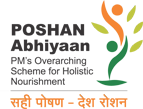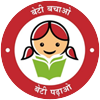Detailed Guidelines for implementation of scheme
F.No.5-5/2000-CD-I
GOVERNMENT OF INDIA
MINISTRY OF HUMAN RESOURCE DEVELOPMENT
DEPARTMENT OF WOMEN AND CHILD DEVELOPMENT
Shastri Bhawan, New Delhi
Dated: 26-9-2000
GUIDELINES FOR IMPLEMENTATION OF ADOLESCENT GIRLS SCHEME AS A COMPONENT UNDER CENTRALLY SPONSORED ICDS (GENERAL) SCHEME
Introduction
1. Adolescence is a crucial phase in the life of woman. At this stage, she stands at the threshold of adulthood. This stage is intermediary between childhood and womanhood and it is the most eventful for mental, emotional and psychological well being. The life-cycle approach for holistic child development remains unaddressed if adolescent girls are excluded from the developmental programmers aimed at human resource development.
2. For the first time in India, a special intervention was devised for adolescent girls using the ICDS infrastructure. ICDS with its opportunity for childhood development, seeks to reduce both socio-economic and gender inequities. The Adolescent Girls (AG) Scheme under ICDS primarily aimed at breaking the inter-generational life-cycle of nutritional and gender disadvantage and providing a supportive environment for self-development.
Present Intervention
3. The AG Scheme in its present form is being implemented through Anganwadi Centers in both rural and urban settings. Under the Scheme, the adolescent girls who are unmarried and belong to families below the poverty line and school drop-outs are selected and attached to he local Anganwadi Centers for six-monthly stints of learning and training activities. The objective of the Scheme is to increase self-confidence, boost moral and give dignity. The adolescent girls scheme has been designed to include 2 sub-schemes viz. Scheme- I (Girl to Girl Approach) and Scheme-II (Balika Mandal). The Scheme-I has been designed for adolescent girls in the age group of 11-15 years belonging to families whose income level is below Rs. 6400/- per annum. The Scheme-II is intended to reach to all adolescent girls in the age group of 11-18 years irrespective of income levels of the family. It may, however, be mentioned that even under Scheme-II, younger girls in the age group of 11-15 years and belonging to poor families got a definite preference in the identification process. The AG Scheme has been sanctioned in 507 ICDS blocks throughout the country.
4. Apart from that, AG Scheme with some modification and content enrichment was also experimented in other areas. Under the SIDA supported ICDS programmer in 47 blocks of Tamil Nadu, modified AG Scheme was successfully implemented. Again in Rajasthan and Andhra Pradesh, State specific intervention for Adolescent Girls have been implemented. In World Bank assisted ICDS projects, the AG Scheme with additional inputs like deworming and IFA supplementation etc are also being implemented.
Kishori Shakti Yojana - A new initiative
5. Various base line surveys clearly reveal that the health, nutrition, education and social status of adolescent girls are at sub-optimal level. The surveys also reveal that the adolescent girls do not have adequate access to vital health and nutrition information/ services. Programmers aimed at improving the nutritional and health status of adolescent girls and promoting self-development, awareness of health, hygiene, nutrition, family welfare and management, it is well recognized, could significantly improve the health and nutritional status of women and children and promote the decision making capabilities of women. There has also been persistent demand from the State Governments/ UT Administrations on the urgent need to provide cover of ICDS to adolescent girls in all the ICDS Projects.
6. In view of the facts mentioned in para 5 above, a need has been felt to extend the coverage of the Scheme with content enrichment, strengthen the training component particularly in vocational aspects aimed at empowerment & enhanced self perception and bring about convergence with other programmers of similar nature of education, rural development, employment and health sectors. Accordingly, the following guidelines may be followed by the State Governments/ UT Administrations for implementation of AG Scheme as a component of ICDS Scheme.
7. The Scheme may be called 'Kishori Shakti Yojana' (KSY).
8. The objectives of the Scheme are as follows: -
- To improve the nutritional and health status of girls in the age group of 11-18 years;
- To provide the required literacy and numeracy skills through the non-formal stream of education, to stimulate a desire for more social exposure and knowledge and to help them improve their decision making capabilities;
- To train and equip the adolescent girls to improve/ upgrade home-based and vocational skills;
- To promote awareness of health, hygiene, nutrition and family welfare, home management and child care, and to take all measure as to facilitate their marrying only after attaining the age of 18 years and if possible, even later;
- To gain a better understanding of their environment related social issues and the impact on their lives; and
- To encourage adolescent girls to initiate various activities to be productive and useful members of the society.
9. The Department considers that a single tailor-made Scheme for adolescent girls may not be able to achieve the objectives of Kishori Shakti Yojana as mentioned in para 8 above. There should be a basket of programmatic options available with the State/ UT/ districts to selectively intervene for the development of the adolescent girls on the basis of State/ UT/ area specific needs and requirements. Some of the options are provided below in para 10 and the State/ UT/ district may like to choose one or more of these, for empowerment of adolescent girls.
10. The options are as under: -
10.1 The existing model of AG-I and/or AG-II Scheme may be continued.
10.2 Emphasis on nutritional and health status of AG Scheme should be given. IFA supplementation along with deworming interventions and nutrition and health education may be provided. Researches have indicated that acute inter-State and inter-regional differences in the status of adolescent girls prevail in India. However, the most common similarity exist in low levels of iron and folic acid in AGs leading to nutritional anemia and low health status in comparison with adolescent voice. Under the option, a concerted effort is to be made to provide nutritional and health education including sanitation and personal hygiene aspects. Under the health sector, the RCH programmer has been launched in Ninth Plan with a component for adolescent girls also. The States may prepare a schematic Plan of Action stipulating convergence with RCH Scheme. Under this option, adolescent girl groups can be formed at Anganwadi Centers and regular supply of IFA and deworming tablets may be ensured along with provisions for nutritional and health education. The other option is to emphasize life education, which may include knowledge of physical and psychological developmental processes including the psychosexual development.
10.3 Another option could be emphasis on education with particular attention on school dropouts and functional literacy among illiterate adolescent girls. Under this option, educational activities should be conducted through non-formal education pattern. There exists provision for non-formal education with the States/UTs. A meaningful convergence with Department of Education may also be established through utilizing those provisions for imparting non-formal education to adolescent girls. Emphasis on life education aspects including physical, developmental and sex education should be given. The adolescent girls may be congregated at Anganwadi Centers and the education could be provided through experts, consultants, NGOs and specialized Government functionaries.
10.4 Alternatively, vocational training activities may be undertaken for adolescent girls for their economic empowerment. At Anganwadi Centers, a group of 20-25 girls may be identified by the Supervisor (Mukhya Sevika). Of these, nomination of 2 selected girls from each Anganwadi Centre may be sent to the Office of District Programmer Officer. District Programmer Officer in consultation with CDPO, officer’s in-charge of these sectors and NGOs will organize vocational training courses, non-formal education course, life education courses, health and nutrition education, legal literacy etc. Some Government Authority/Technical Institute should of minimum 60 days followed by a certificate preferably issue the training course of these selected adolescent girls. Following completion of the training, the group leaders (2 adolescent girls from each Anganwadi Centre) will provide training to the remaining adolescent girls at Anganwadi Centre. Besides the financial norms under the Yojana, additional requirements may be proposed to be met under out of the funds available under ICDS (UDISHA) training programmer. A proposal to this effect may be sent to Training Division of the Department for getting additional funds.
10.5 The Government of India and State Governments/UT Administrations implement a number of Schemes/programmers for self employment and income generation, specifically, the Department implements STEP and NORAD schemes. Synergy between AG Scheme and these self-employment schemes should be made. In fact, the AG’s who have been trained in various vocational streams may be given preference under these Schemes. Similarly, these AG’s should also be motivated to form self-help groups and covered under schemes such as Saw-Shakti etc.
10.6 Another alternative could be formulating a Plan of Action for improvement of social status of adolescent girls. Most of the studies on situational analysis of adolescent girls indicate a low social status of adolescent girls following early marriage and pregnancy. The components addressed under this alternative could be focused on enhancement of self-esteem, addressing the problems of social abuses, strengthening of will power and self-confidence. The ill effects of early marriage and pregnancy with gender equity and equality could also be included in the curricula. Further, legal literacy and knowledge of rights could be also provided. Under this option, a module for training in Anganwadi Centers for empowerment of adolescent girls should be developed in consultation with local experts/consultants.
10.7 Apart from these interventions, the State Governments/ UT Administrations could choose their own options and prepare Plan of Action.
11. State Governments/UT Administrations may involve Panchayati Raj institutions, NGOs. other institutions for implementation of the Scheme.
12. State Governments /UT Administrations may prepare Plan of Actions under the Kishori Shakti Yojana and share this with the Department.
13. The interventions may be limited to the approved amount of Rs. 1.10 lakh per block/ ICDS project per annum only. The funds under the Scheme will be made available to the States/UTs through funds released for implementation of ICDS Scheme. The State Govts. /UTs will send Half-Yearly Report on the progress of the implementation of the Scheme. In case, some additional funds are required for vocational training purposes, the State Govt. should prepare a proposal under ICDS Training programmer( UDISHA) and send it to the Department for consideration.
14. Many sectoral schemes pertaining to education, health and family welfare, rural development, water and sanitation etc. are being implemented in the States/UTs. Meaningful convergence with those schemes should be tried for optimum impact of the Scheme.
15. The ICDS network should do monitoring of the Scheme.
16. The number as well as the specific ICDS blocks/ projects to be covered under the Scheme would be intimated from time to time.
17. In some States, World Bank assisted ICDS projects are in operation, which have a specific AG component going on with some additional input. That components should be implemented in the project areas and as per administrative orders already issued.












